With the modern world making a shift towards natural ways to stay healthy and strong, CBD-based products are taking a centre stage with more benefits for human well-being than we can count.
If you’re looking to try CBD but aren’t sure where to start, we put together this thorough, well-researched guide to answer your questions and help you understand CBD, its uses, benefits, types, legality in India, and more.
Outline
Chapter 1: What is CBD?
Chapter 2: How does CBD work?
Chapter 3: Types of CBD
Chapter 4: Medical conditions that CBD can help with
Chapter 5: How to use CBD?
Chapter 6: Administering dosage in different CBD products
Chapter 7: How long does CBD take to have an effect?
Chapter 8: The Entourage Effect
Chapter 9: Possible drug interactions & side effects of CBD
Chapter 10: How to buy CBD in India?
Chapter 11: What to ask yourself before buying CBD in India?
Chapter 12: Legal status of CBD in India
Chapter 13: Tips for CBD Beginners
Medical Disclaimer:
CBD as a medicine is not approved by the FDA or the AYUSH Ministry of India. CBD products are not for use by or sale to persons under the age of 21 and 18 years in the respective states. No CBD product is intended to diagnose, cure, treat, or prevent any disease.
Chapter 1: What is CBD?
Cannabidiol (CBD) is a chemical compound found in the cannabis plant. The class of chemical compounds to which CBD belongs is called cannabinoids. It is these cannabinoids that give cannabis its medicinal, therapeutic, and recreational powers.
The cannabis plant contains over 118 identified cannabinoids among which CBD and THC are the most famous and important.
THC, or tetrahydrocannabinol) is the cannabinoid that gets you high when you smoke cannabis. Unlike THC, CBD is non-intoxicating in nature and does not cause feelings of intoxication or euphoria in the body.
Different species of cannabis plants contain different cannabinoids in varying concentrations. Hemp and Marijuana are two common species. Marijuana is rich in THC, which is why it is primarily used for recreational purposes. Hemp, on the other hand, is a variety that contains low amounts of THC and high amounts of CBD.
CBD continues to be studied for its many therapeutic properties. Research so far tells us that it has multiple healing properties that can help the human body with a number of medical conditions. The popularity of CBD as an all-natural, plant-based, and non-intoxicating has led manufacturers to produce different types of CBD products that consumers can easily add to their everyday lifestyle.
Where does CBD come from?
The richest source of CBD is the industrial hemp plant. This cannabis species naturally contains high amounts of CBD normally in its leaves, buds, and flowers. However, the amount of CBD from one hemp plant to another varies. That is why in a more general sense, any cannabis plant which is rich in CBD and contains less than 0.3% of THC can be considered hemp.
CBD is extracted from hemp using a number of extraction processes. These processes vary on multiple parameters such as the solvent and the part(s) of the plant being used and the cannabinoid(s) being targeted.
We learn more about these processes and parameters in Chapter 3.
Where is CBD used?
Scientific research continues to find that CBD has many therapeutic benefits and can help with quite a number of medical conditions. The branch of science exploring the effects of CBD is still young and exciting. Yet, some studies show that CBD exhibits the following properties:
- Anti-oxidant
- Anti-inflammatory
- Analgesic (pain-relieving)
- Anti-depressant
- Neuroprotective
- Anti-psychotic, and
- Anxiolytic (to reduce anxiety)
Because of these properties, people use CBD for a vast array of medical conditions such as:
- Anxiety, Depression, and Sleep Disorders
- Chronic Pain and Muscle Spasms
- Drug Addiction and Withdrawal
- Acne, Psoriasis, and Skin Disorders
- Parkinson’s, Huntington’s, and Neurodegenerative Diseases
- Epilepsy
We discuss the exact effects of CBD on each of these with reference to relevant studies in Chapter 5.
FAQs about CBD
What is CBD?
CBD is a chemical compound present in the cannabis plant. It has several therapeutic and medicinal properties. CBD interacts with certain neurotransmitters in the brain and throughout the body and helps in dealing with a number of medical conditions.
Does CBD make you high?
No. CBD is a non-intoxicating cannabinoid. It does not cause any euphoric effects on the body. The cannabinoid that makes you high is THC.
Is CBD safe to use?
Good-quality CBD products are generally safe to use and well-tolerated in people of all ages. However, as the body takes time to adjust to CBD, users may experience some mild side effects.
Is CBD legal?
Since 2019, the government of India allows the use of CBD, with low amounts of THC, for general as well as medicinal use. When it comes to CBD in particular, the laws in India are quite unclear. The prime source of CBD is hemp whose cultivation is allowed only with special permission. Please note that CBD products are not approved by the FDA and the Ministry of AYUSH.
What is CBD Oil?
CBD oil is a form of CBD made by mixing a CBD extract into a solvent base such as alcohol or any other oil. CBD oil is good for direct use on skin and for consumption in food items.
What is the difference between CBD oil and hemp oil?
Hemp oil comes from the seeds of the hemp plant that contains all the chemical compounds present in the seeds. CBD oil is derived from the leaves, buds, and flowers of the hemp plant and contains specifically high amounts of CBD.
What is CBD used for?
CBD shows anti-inflammatory, anti-oxidant, anxiolytic, anti-depressant, and properties. For these reasons, it is used for managing pain, relieving stress, anxiety, and depression, and for fighting skin conditions such as acne and eczema.
Does CBD interact with other medications?
CBD may interact with some common medications. The enzymes that metabolise CBD are CYP450 enzymes. These are the same enzymes responsible for metabolising many common drugs.
Do you need a prescription for CBD?
No. You do not need a prescription for CBD isolates. However, we recommend you consult a medical professional before trying CBD products in case you have any ailments.
What are the side effects of CBD?
CBD is generally safe for people of all ages. However, some common side-effects include headache, drowsiness, dry mouth, fatigue, weight change, and diarrhoea.
Is CBD addictive?
No. CBD is not an addictive drug. In fact, some studies indicate that CBD may be helpful in fighting opioid and nicotine addiction.
Can you overdose on CBD?
No. According to available studies, CBD is safe to use in high doses. While CBD does not cause a fatal overdose, some effects of too much CBD include lethargy and drowsiness.
What is the ideal CBD dosage?
There is no ideal dosage for CBD. It varies from person to medical condition. However, it is always recommended that you start with the lowest possible dosage (20-25mg) and increase it gradually depending on how your body reacts.
What is CBD? | Chapter 2: How does CBD Work?
More and more people are beginning to use cannabidiol for multiple reasons. But why? Yes, we know that CBD has therapeutic effects on the body but how does cannabidiol work?
In this chapter, we understand the relationship between the cannabinoids in the cannabis plant and the receptors in the human body that make this interaction possible.
2a. Cannabinoids in the Human Body
Cannabinoids (like CBD and THC) don’t just exist in the cannabis plant. All vertebrates, including humans, produce cannabinoids. These are called endocannabinoids because they are produced inside the body.
The word endocannabinoid is the sum of endo (endogenenous, i.e., having an internal cause or origin) and cannabinoid (any group of closely related compounds which include cannabinol and the active compound of cannabis. The cannabinoids found in plants are called phytocannabinoids.
These endocannabinoids use the Endocannabinoid System (ECS) to communicate with each other and other neurotransmitters throughout the body. These endocannabinoids are similar in structure to phytocannabinoids present in the cannabis plant. Therefore, the latter combines with the cannabinoid receptors in the human body to create their effects.
2b. The Endocannabinoid System
The ECS is a neurotransmitter system responsible for many regular functions and feelings in the body. These include memory, motor control, mood, fertility and reproduction, immune function, sleep, appetite, bone development, and pain reception.
The ECS has 3 major components:
- Endocannabinoids: which are like the neurons of the ECS. Endocannabinoids are produced throughout our body. The two main endocannabinoids are anandamide (involved in appetite and memory) and 2-arachidonoylgylcerol (involved in maintaining emotional and cardiovascular health).
- Cannabinoid Receptors: the receptors that the endocannabinoids bond with. These are present in both the central and the peripheral nervous system.
- Enzymes: that help break down the endo and Phyto-cannabinoids.
Cannabinoid Receptors in the Human Body
The human body has two cannabinoid receptors that we know of:
- CB1: these receptors are present throughout the body with a majority in the brain. CB1 receptors deal with all kinds of movement and coordination in addition to memory, thinking, mood, emotions, and pain.
- CB2: these receptors are commonly present in the immune system. Their primary role is to moderate pain and inflammation in the body.
How does ECS work (without cannabis)?
Before understanding what happens to the ECS when we ingest cannabinoids from cannabis, let’s take a look at how the ECS works in general.
The endocannabinoid system is like any other signalling system in the body. But it works in a backward direction. In a typical signalling system, the neurons in the body communicate with each other and the rest of the body through chemical messages. Typically, a neuron (the presynaptic cell) releases neurotransmitters that travel across the synapse and attach themselves to specific receptors (the postsynaptic cell).
The postsynaptic cell is then activated and triggers a set of events that allow the message to be passed along.
In the case of ECS, however, the postsynaptic neuron gets activated first. This causes the cannabinoid (i.e. the messenger of the ECS) to be activated on demand from the fat cells that are already present in the postsynaptic neuron. These then travel back to the presynaptic neuron and attach themselves to the cannabinoid receptors.
What does this mean?
This means that the messengers of the ECS i.e. the cannabinoids act on presynaptic cells. So, instead of generating the required amount of neurotransmitters, they work with the available amount thus affecting the way messages are sent, received, and processed in the body.
2c. CBD and the ECS
Because cannabinoids have a structure similar to endocannabinoids, they also bond with the CB1 and CB2 receptors in the body. This leads to alteration in body functions and hence CBD shows its effects.
Most cannabinoids can bind to both these receptors. THC quickly and directly connects with the CB1 receptors throughout the body suddenly throwing the system off-balance. This imbalance in the system is what we know as being high.
But some cannabinoids such as CBD have a low affinity to both the CB1 and CB2 receptors. It does not directly trigger either of the receptors but works indirectly. Because CBD has low binding affinity, it works the other way around by inhibiting the breakdown of certain cannabinoids in a particular receptor.
For instance, CBD reduces the action of the enzymes that will break down anandamide in the body. This leads to a higher concentration of anandamide. And since it has a calming effect on the brain, higher concentration allows CBD’s use in treating stress and anxiety.
2d. Foods and Activities that Boost the ECS
The functioning of the ECS is influenced by many factors in addition to CBD. These majorly include the foods we eat and the activities we do. Since the ECS is responsible for all activities from life-sustaining to life-enhancing, an imbalance in the system can lead to many medical situations. Following are some exercises and foods that help keep the ECS in balance and can be adopted in addition to CBD.
Running and Workout
Running and a good cardio workout releases anandamide in the body which leads to the feeling good after a workout. This is not because of endorphins but because of the endocannabinoid system.
Essential Fatty Acids
Good Omega-3 and Omega-6 fatty acids contain a high amount of precursors to endocannabinoids. That is to say, your body needs to ingest these to be able to regularly produce endocannabinoids.
The most common sources of essential fatty acids are meat, poultry, walnuts, flax seeds, and sunflower oil. But our favourite remains hemp! Hemp seeds and hemp oil both contain omega-6 and Omega-3 in the optimal ratio of 3:1 along with other essential nutrients and minerals.
Hemp seeds and/or oil are a great addition to your diet and everyday life to keep your endocannabinoid system in check.
Herbs
Surprise, surprise! Cannabis is not the only plant that contains cannabinoids. Turmeric, Liverwort, Coneflower, Black Pepper, and Echinacea are also good sources of anandamide.
2e. Things that Harm the ECS
On the other side of doing certain things for a healthy ECS lies the avoidance of some.
High Pesticide Foods
Organic foods are your body’s best friend. To keep your ECS, and your whole body, in good health, avoid inorganic, chemical-based foods as much as you can.
Alcohol
Excessive consumption of alcohol can lead to a reduction in CB1’s sensitivity thus altering the number of endocannabinoids present in the body.
Chronic Stress
When it comes to avoiding stress, the common word is to relax and take life by the day. But here, it also considers the other side of stress. For instance, too stressful an exercise can have a negative impact on the ECS.That is not a trump card for getting out of exercising but a nudge in the direction of combining it with activities such as meditation, creative processes, and/or structured breathing.
What is CBD? | Chapter 3: Types of CBD
When talking about CBD, the mention of the phrase Type(s) of CBD is inescapable. While to beginners, two CBD products look just about the same, those who are more informed know their isolates from full-spectrum.
This chapter discusses the three types of CBD, full-spectrum, broad-spectrum, and isolate, which are present in the market today. Here, we understand what differentiates them and how is one better than the other, if it is.
3a. Full-spectrum CBD
Full-spectrum is a term that defines an extract containing the complete range of all the different chemical compounds present in the source plant. In our case, this means that full-spectrum CBD will contain, in addition to CBD, other chemical compounds originally present in the cannabis plant.
That means, in addition to CBD, other cannabinoids such as CBG, CBN, THC and terpenes and flavonoids are also present in a full-spectrum CBD extract. In this extraction process, we retain the complete chemical spectrum of the source plant.
Here is a list of some common cannabinoids that you can expect to find in a full-spectrum product:
- CBD: Cannabidiol is the second most common cannabinoid in cannabis and will definitely be present in a full-spectrum extract.
- CBG: Cannabigerol is another essential cannabinoid with a typical quantity of less than 3% in pure full-spectrum oils.
- CBC: Cannabichromene is one of the six most abundant cannabinoids in cannabis but is present in very small amounts in full-spectrum extracts.
- THC: Tetrahydrocannabinol is present in tiny quantities in full-spectrum oils.
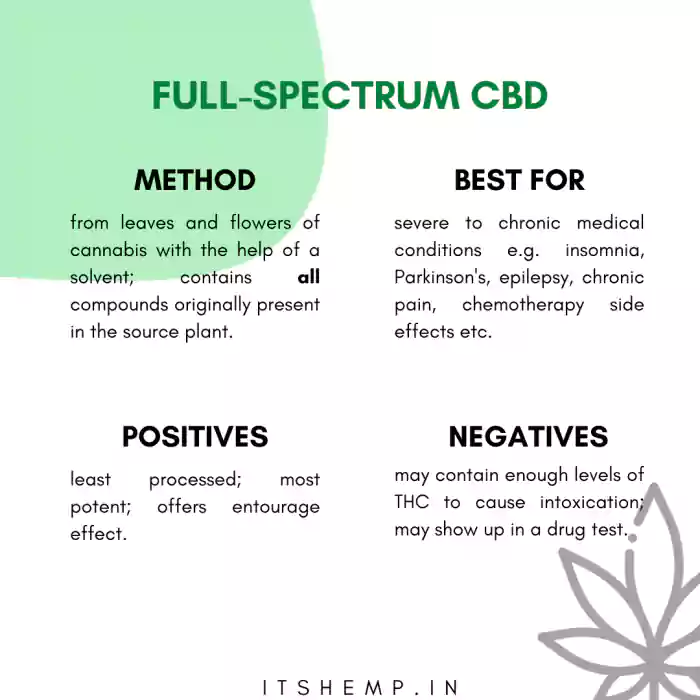
3b. Broad-spectrum CBD
A broad-spectrum CBD extract contains, in addition to CBD, all naturally occurring chemical compounds but no THC. Various filtration processes are used to completely rid the extract of THC. Broad-spectrum CBD extracts also create the entourage effect but without the intoxicating effects of THC.
This extract comes from the same process as that of full-spectrum extract i.e. from the roots, stems, flowers, and leaves of the plant. The difference, however, is that after extraction, we separate and remove the THC compound entirely.
Broad-spectrum CBD offers a more potent THC-free way of consuming CBD in comparison with CBD isolate. A true broad-spectrum extract will have no traces of THC and will still yield a full cannabinoid profile thus providing better therapeutic effects.
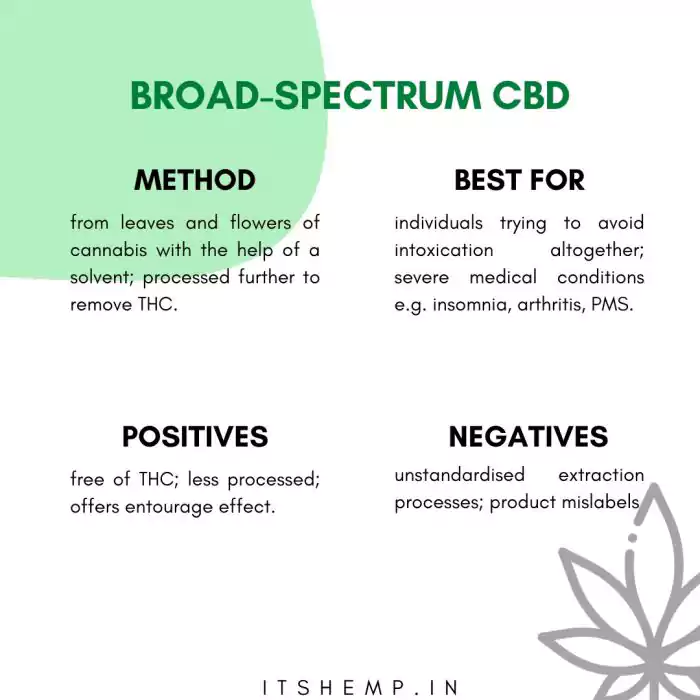
3c. CBD Isolate
This extract is the purest form of CBD. An isolated extract contains only and only CBD. We remove all the other naturally occurring compounds from the source plant. Everything else such as terpenes, flavonoids, and other cannabinoids are removed from this extract.
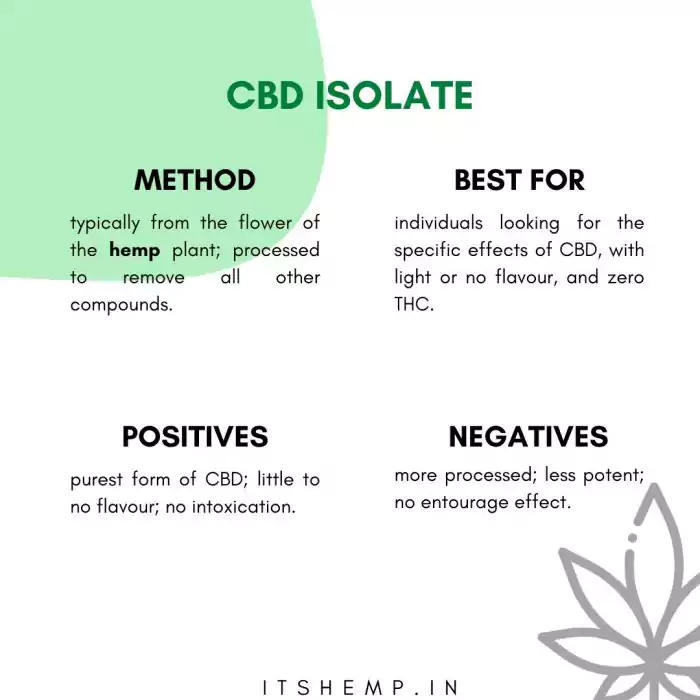
What is CBD? | Chapter 4: Medical Conditions CBD Can Help With
We are witnessing an increase in the number of scientific trials that aim to study the therapeutic benefits of CBD on a range of medical conditions. And the results are promising too.
For instance, in 2018, the FDA approved a medication called Epidiolex to treat children with epileptic conditions such as Dravet Syndrome and Lennox-Gastaut Syndrome. This drug is derived from pure CBD. Similarly, besides epilepsy, CBD is proving promising in helping several medical conditions.
This chapter lists down some of the conditions that, according to research and studies, CBD can help with.
Acne
Acne is the end result of an overproduction of fatty acids and sugar under the skin surface in visible form. CBD can now demonstrably regulate the over and/or under production fatty acids. CBD brings into equilibrium the production of glucose and lipids by interacting with the TRPV4 and NRIP1 receptor. It can, therefore, effectively reduce sebum production in the body leading to reduced acne.
Addiction
Studies indicate that CBD can help those addicted to cocaine, methamphetamine, and other psychostimulant drugs. Another study suggests that in patients using methadone treatment for opiate addiction, cannabis can provide a stabilizing effect.
Another type of addiction that CBD helps with is nicotine addiction. Preliminary findings in another study show that CBD therapy helps smokers reduce the number of cigarettes they smoke by 40%.
ALS
Amyotrophic Lateral Sclerosis (ALS) is a progressive neurodegenerative disease that affects the nerve cells in the brain and the spinal cord. It breaks down the nerve cells and reduces functionality in the muscles that they supply.
Many effects of cannabis such as analgesia, muscle relaxation, saliva reduction, sleep induction, and appetite stimulation can help in managing ALS. Moreover, the strong antioxidative and neuroprotective effects of cannabis may prolong cell revival.
A double-blind, placebo-controlled study on 60 patients with neurodegenerative conditions shows that CBD has a positive effect on spasticity symptoms. Spasticity is a major determinant of disability and decline in quality of life in patients with these diseases. CBD showed acceptable safety and tolerability profile and had a beneficial effect on pain with no serious side effects.
Alzheimer’s Disease
Alzheimer’s is an irreversible and progressive brain disorder that gradually destroys thinking skills and memory. Research studying the neuroprotective properties of CBD indicates that it can delay or prevent symptoms of the disease.
Featured Read: CBD Oil for Alzheimer’s in India
Anxiety
Some scientific research points towards the anxiolytic effects of CBD. Another research shows that CBD can potentially alter the way the receptors in our brain respond to serotonin.
In a study done on 57 subjects, each was given either CBD or placebo. Their anxiety levels were monitored through physiological measures. The study shows that subjects who received 300mg of CBD displayed less anxiety just before a public speaking event.
Featured Read: CBD Oil for Anxiety in India
Arthritis
In the simplest of terms, arthritis is an inflammation of the joints. The anti-inflammatory properties of CBD thus help in managing pain and inflammation in arthritic conditions.
A 2005 study by researchers at Royal National Hospital in UK showed that drugs with 1:1 ratio of CBD and THC reduced pain in patients with rheumatoid arthritis. A 2011 study shows that CBD helped reduce inflammatory pain in rats by affecting the way the pain receptors responded to stimuli. A 2016 study found that the topical application of CBD showed the potential to relieve pain and inflammation associated with arthritis.
Featured Read: CBD Oil for Arthritis in India
Asthma
CBD is interesting for asthma patients because of its anti-inflammatory properties. Because CBD has a soothing effect on almost all inflammations on the human body, it helps in healing the symptoms of Asthma.
A 2015 review of Brazilian studies on Asthma reveals that CBD can significantly reduce the cytokines that induce inflammation in the lungs and thus help in providing relief.
Autism
A 2019 publication studying the real life experience of autistic patients with cannabis showed that CBD helps in managing irritability, anxiety, and social behaviour.
Another study collates reports from parents who gave CBD to their autistic children in the form of sublingual tinctures. The results showed 67% decrease in self-injury and rage attacks. 68.4% patients showed reduced symptoms of hyperactivity. 71.4% experienced improved sleep and 47.1% saw a relief in anxiety.
Chronic Pain
Evidence suggests that cannabinoids may prove useful in modulating pain by inhibiting neuronal transmission in pain pathways. A study in the Journal of Experimental Medicine suggests that CBD can reduce pain and inflammation in the body.
The similar effects of CBD also extend to other manifestations of chronic pain such as inflammation and neuropathic pain.
Featured Read: CBD Oil for Pain in India
Type-1 Diabetes
Diabetes is an endocrine disorder that causes high levels of blood glucose. In type-1 diabetes, the body’s immune system attacks the pancreatic cells and causes inflammation. A research on non-obese diabetic mice finds that CBD treatment can significantly reduce pancreatic inflammation and thus lower the incidence of diabetes.
Inflammatory Bowel Syndrome
Research shows that CBD can help manage gastrointestinal problems. By relaxing the tissues in the GI tract, CBD reduces bloating, gas, constipation, and diarrhoea. It also reduces pain, inflammation, and nausea thus reducing the discomfort of IBS patients.
Fibromyalgia
Fibromyalgia is a common condition with widespread chronic pain, fatigue, mood changes, and memory problems. A 2013 review suggests that CBD can help in relieving pain caused by fibromyalgia just as it does for MS and Arthritis.
A major feature of fibromyalgia is central sensitization wherein the entire central nervous system becomes sensitized to certain stimuli. A 2017 publication suggests that CBD can possibly diminish the activity of the brain cells glia that leads to central sensitization.
Epilepsy
As we already know, the FDA has approved CBD-based Epidolex as a prescription drug for patients with epileptic conditions such as Dravet syndrome and Lennox-Gastaut syndrome.
According to a 2016 study, CBD is highly effective in reducing seizure frequency. From among 214 epileptic patients, 36.5% experienced fewer seizures per month on adding CBD to their existing medication.
Multiple Sclerosis
MS occurs when the immune system of the body eats away at the protective covering of nerves. As a result of nerve damage, the communication between the brain and the body is disrupted. It also causes many other symptoms such as vision loss, fatigue, pain, and impaired coordination. According to research, cannabinoids such as CBD and THC can effectively reduce muscle spasms, inflammation, and nerve pain in MS patients.
Nausea
Nausea can be a symptom and side effect of a number of medical conditions. HIV/AIDS, chemotherapy, pregnancy, migraine, seizures, and gastrointestinal infections are some common conditions that often bring nausea.
Studies find that the anti-emetic effects of cannabinoids such as CBD can suppress vomiting and help in controlling other symptoms of nausea. A 2011 study highlights how CBD can help regulate nausea and vomiting in patients undergoing chemotherapy.
Post-Traumatic Stress Disorder
PTSD refers to severe psychological consequences of exposure to, or confrontation with, highly traumatic events. Observations from studies suggest that cannabinoids such as CBD can help in reducing fear expression and disrupting memory consolidation process.
Parkinson’s and Huntington’s Disease
Preliminary studies indicate that cannabinoids like CBD and THC can help slow the progression of Parkinson’s and Huntinton’s. A 2014 publication suggests that CBD can improve the quality of life in Parkinson’s patients by working on sleep, functional mobility, and depression.
Schizophrenia
CBD can be a viable holistic treatment for schizophrenics who often experience delusions and hallucinations. Preliminary findings from some studies indicate that CBD can have antipsychotic effects and can be a safe and well-tolerated alternative treatment for this condition.
Sleep Disorders
The calming effects of CBD are a very important factor for people with insomnia and sleep disorders. Because CBD decreases anxiety, it makes falling asleep easier. CBD also proves to be a promising solution for REM sleep behaviour disorder and excessive daytime sleepiness.
Featured Read: CBD Oil for Insomnia in India
Stroke and Traumatic Brain Injury
Studies indicate that CBD’s effects can improve neurobehavioral function, reduce neural loss, and lead to long-term recovery from stroke. Another research shows that CBD administered after a traumatic brain injury can have neuroprotective effects. In some studies, CBD has been observed to increase cerebral blood flow during a stroke.
Kidney Diseases
A study from Chinese researchers suggests that CBD can decrease toxins in the kidney by reducing inflammation, oxidative stress, and kidney cell death.
What is CBD? | Chapter 5: How to Use CBD?
With CBD garnering more and more popularity, a variety of preparation methods are emerging. There are at least 5 different types of ways in which you can consume CBD.
This chapter discusses some of the most popular ways of using CBD with the positives and negatives of each. Before understanding the different types of products that CBD comes in, we take a look at the different ways in which the body absorbs CBD.
Essentially, the aim is for CBD to enter the bloodstream to interact with cannabinoid receptors in the body. CBD can reach the bloodstream via:
- Inhalation (through smoking or vaping)
- Mucous Membrane (i.e. from under the tongue)
- Liver (after being broken down)
- Topically (through the skin. CBD applied topically never reaches the bloodstream)
Each of these methods have different uptake times and their effects lasts for varying durations.
Now we look at the different types of CBD products.
5a. CBD Oil and Tinctures
CBD Oils and Tinctures contain concentrated forms of CBD and are rich in vitamins, antioxidants, and omega-3s. Perfect for beginners, tinctures are the most convenient method of taking CBD in high strengths. These provide a quick response because of their high absorption rate.
How to take?
Tinctures have very potent cannabinoid content. That is, they are designed to be taken in small doses. Most oil drops and tinctures come with a built-in dropper that measures the quantity in mL.
Oils and tinctures are placed under the tongue and absorbed in the mouth. This is absorption via the mucous membrane. In this way, they directly enter the bloodstream and reach the brain in higher concentrations.
It is important that you allow CBD to be absorbed and not swallow it directly. Absorption through mouth may take up to 3 minutes. The effects come within 5-20 minutes and last for about 2-4 hours.
Oils and tinctures can also be added to foods and beverages. They boost the nutritional value of meals, smoothies, salads, dressing sauces, and any other meal.
Pros
almost immediate relief; enter the bloodstream directly; enhanced effects in a short amount of time; convenient and discreet.
Cons
Measuring consistent dosages may get troublesome; alcohol content cannot be accounted for; alcohol may be cause side-effects.
-
Neet 300mg Broad Spectrum Vijaya Tailam CBD 30ml₹1,999.00
-
Product on saleBroad Spectrum CBD Drops₹1,999.00 – ₹9,999.00
-
Cannavedic CBD Isolate Tincture Icy Mint, 1500mg, 30ml₹4,500.00
-
Product on saleNoigra Full Spectrum Hemp Oil, 1000mg, Mint, 30mlOriginal price was: ₹5,499.00.₹4,999.00Current price is: ₹4,999.00.
-
Cannavedic Pure CBD Isolate Crystals – 1000mg|5000mg₹1,500.00 – ₹6,500.00
5b. CBD Edibles
CBD edibles are like candies or treats that contain a pre-set amount of CBD. These are foods and beverages infused with CBD that you can directly eat or consume. Edibles are good for obtaining a more general sense of well-being. Edibles take the longest to have an effect because they go through the digestive system before entering the bloodstream.
How to take?
Edibles are ready for consumption as they come. Some common types of CBD edibles are gummies, chocolates, chewing gums, protein bars, tea, coffee, and soft drinks. The onset time for edibles can be anywhere between 45 minutes to 1 hour. Their effect usually lasts for 4-6 hours.
Pros
more long-term effect; predetermined CBD dosage; consistent amount of CBD in each bite/sip.
Cons
take longer to have an effect; most of the CBD gets broken down into the digestive system.
-
Zero CBD Blue Dream 15mg Broad Spectrum CBD Gummies (4 Pcs)₹400.00 – ₹7,000.00
-
Zero CBD Grand Daddy Purple 15mg Broad Spectrum CBD Gummies (4 Pcs)₹400.00 – ₹7,000.00
-
Product on saleAndyou – Vibe&U Mood Uplift Gummies (200mg CBD + terpenes for good vibes), Orange Flavour, 10 GummiesOriginal price was: ₹1,499.00.₹1,320.00Current price is: ₹1,320.00.
-
Product on saleSanan 1750mg Cannabis Infused (1:3) Gummy Vati Plus (Berry + Original Flavour) (10 pcs)₹1,000.00 – ₹1,200.00
-
Product on saleCannagummies 500mg-1200mg Cannabis Infused (1:1) & Mix Fruit Gummies (20 pcs)₹2,500.00 – ₹7,500.00
5c. CBD Topicals
Topicals are products that are applied externally through the skin. CBD topicals do not enter the bloodstream. However, they do interact with the nearby cannabinoid receptors.
For this reason, topicals are primarily used for localised effect such as managing inflammatory pain or dryness in the skin. In case of topicals, the anti-inflammatory and anti-oxidant effects of CBD are at play the most. Some common examples of topical products are balms, creams, lotions, and body oils.
How to take?
Topicals are applied and massaged directly on to the skin. These never reach the bloodstream but they do interact with local CB2 receptors and provides localised relief.
Pros
Faster localised relief; no hassle of measuring dosages.
Cons
Other ingredients may cause allergies.
-
India Hemp Organics CannaBliss Arthritis Relief- CBD Oil (100ml)₹1,399.00
-
Cure By Design Organic Hemp Balm 2000 mg CBD (50 gms)₹2,500.00
-
India Hemp Organics CannaBliss Arthritis Relief- CBD Oil (50ml)₹999.00
-
Wholeleaf Muscle And Joint Pain Rub Oil with 140 gms of Cannabis Leaves, 50 ml₹999.00
-
Product on saleAnanta Cannaease Hemp Balm, 25gOriginal price was: ₹999.00.₹649.00Current price is: ₹649.00.
5d. Capsules and Tablets
Pill preparation is another common way of consuming CBD. Capsules and tablets are typically small gelatin encapsulated oil that you pop into your mouth. CBD capsules work pretty much the same way as traditional vitamin supplements.
The effects of capsules and tablets are similar to that of edibles. They take around 1-2 hours to show effect and last for about 5-6 hours.
How to take?
CBD capsules and tablets are typically of two types—day-time and night-time. Each is taken like a medicine or supplement.
Pros
Predetermined dosage; long-term effect.
Cons
Other ingredients may cause side effects and allergies.
5e. CBD Vapes and Smokes
Vaping is the most rapid and effective way of experiencing the benefits of CBD. Vape oils are vaporizers with cartridges full of CBD oil or vape pens that are used to inhale CBD concentrates.
Smokes are typically joints that contain high amounts of CBD. On inhalation, CBD immediately enters the bloodstream and provides the fastest blood-brain exchange. Typically, vapes and smokes take effect within a few seconds. The effects last for about 1-2 hours.
A vaporizer is a device that immediately heats up a liquid to a temperature that it becomes a gas. The gas is then inhaled. The liquid used in a vapourizer is called an e-liquid.
How to take?
Vape oils and joints are burnt and then smoked, much like the traditional way of smoking joints.
Pros
Immediate entrance to bloodstream; fastest relief.
Cons
Exposure to other carcinogens can be harmful.
Please Note: Vaping is illegal in India.
5f. What type of CBD is best for me?
CBD Oil Drops
Best for: Quick and rapid effects; mixing with food and beverages
Effect felt in: 15-20 mins
Effects last for: 4-6 Hours
Capsules & Edibles
Best for: All day Benefits
Effects felt in: 1 Hour
Effects last for: 6-10 Hours
Topicals
Best for: Acute application on skin, small aches, beauty, glowing skin
Effect felt in: 1-5 mins
ffects last for: 4-5 Hours
Vape Oil
Best for: Immediate effects; people who already vape
Effects felt in: Immediate
Effects last for: 1-2 Hours
The type of CBD product you should use depends on a number of factors. If you are looking for something that is convenient and can accompany you everywhere, CBD gummies or chocolates may be best for you.
The most popular and versatile are CBD oils and tinctures. They are good for direct consumption, need to be taken in small doses, and can be added to meals too. The best way to figure out the CBD product of your choice is to try out a few methods and see which ones best suit your needs.
What is CBD? | Chapter 6: Administering Dosage in Different CBD Products
Determining the amount of your dosage is the most important way part of using CBD in any form. A fixed amount of dosage allows you to plan how much of what type of CBD you need to take and for how long. This chapter focuses on the ways in which CBD dosage is administered in different CBD products.
6a. CBD Edibles and Capsules
It is pretty simple to measure CBD dosage in products like edibles and capsules. These products come in packs of certain quantities and the amount of CBD in each individual piece is predetermined. In these products, you do not need to use a scale or measurer to measure your dosage.
For instance, if you’re using a pack of 20 tablets that contain 20mg of CBD as a whole, then each piece contains 20/20=1mg of CBD.For higher dosages such as 10-20mg per piece, you can look for packages that contain exactly that amount. These make it easier to administer your dosage throughout the day.
6b. CBD Oils and Tinctures
These are the types of products that require a bit of work on your end. In the case of oils and tinctures, you need to measure your dosage every single time. Typically, these come with a built-in dropper with a baseline serving size.
More often than not, the dropper indicates 1ml of liquid that can be considered as the baseline. So, if you are holding a 60ml bottle, it contains 60 servings of 1ml each.
Another thing that comes into play in oils and tinctures is the strength of CBD. This is the amount of CBD present in the total quantity (in ml). For example, if you’re holding a 30ml bottle of 3000mg, then each serving will have 3000/30=100 mg of CBD.
6c. CBD Vapes
Measuring dosage in vapes is much like in oils and tinctures. However, a lot depends on the variety of vape pen and the kind of tank it contains. Here too, if 1ml is the baseline serving then a 20ml bottle of 200mg should give you about 2mg CBD in each puff.
6d. What is the right CBD dosage for me?
Again, there is no one-fits-all answer here. The amount of CBD you should be taking varies according to a number of parameters such as:
- CBD strength
- Delivery method
- Body weight
- Body chemistry
- Medical condition
CBD absorption in the body
- Capsules and edibles: 5-15%
- Tinctures: 20-30%
- Vapes: 40-50%
The simplest and safest way is to begin with the smallest possible dosage and then gradually increase it. For novices, the ideal recommended dosage is between 20mg and 40mg CBD per day. If you notice considerable effects, you can increase it by around 5mg per week. However, if you’ve been recommended CBD by your doctor or healthcare professional, you can take the recommended dosage directly.
What is CBD? | Chapter 7: How long does CBD take to have an effect?
Like we saw in the previous chapters, different types of CBD products have different onset and duration times. In this chapter, we understand that factors that affect the onset time of different CBD products and their reasons.
Factors that Affect CBD Absorption
As we learnt in chapter 6, CBD takes effect after entering the bloodstream. But we know that not all CBD enters the bloodstream in the same way.
The amount of CBD that is eventually absorbed into our bloodstream and is available for use by the ECS is known as the bioavailabiity of CBD.
CBD Bioavailability is the rate at which CBD is absorbed into the blood. It can also refer to the amount of CBD available in a product that is ready to be absorbed. Typically, CBD absorption in the body looks like this:
- Capsules and edibles: 5-15%
- Tinctures: 20-30%
- Vapes: 40-50%
There are several different factors that affect the bioavailability and therefore, the absorption of CBD in the body. This in turn affects the time it takes for CBD to show noticeable effects.
Method of Consumption
The form in which you take CBD has a significant impact on its bioavailability.
Inhalation
When we smoke or vape CBD, the cannabinoids are sent directly to the lungs where they are readily absorbed into the bloodstream and put into circulation throughout the body. With this method, CBD reaches peak concentrations within 2-3 minutes after consumption and the effects follow soon after.
Effect Onset Time: Immediate
Effects Last for: 1-2 hours
Sublingual Consumption
CBD oil and tinctures are consumed sublingually by placing a few drops under the tongue. This is the second most effective method of getting CBD to the bloodstream. Here, CBD is absorbed by the mucous membrane in the mouth. It bypasses the liver and the digestive system and enters the bloodstream without undergoing any kind of metabolic process.
Effect Onset Time: 5-20 minutes
Effects Last for: 4-6 hours
Edibles
In the case of edibles, the CBD first passes through the liver and the digestive system, is broken down, and then enters the bloodstream. This process is called the first pass effect. The liver reduces the CBD concentration before passing the remainder to the bloodstream.
Effect Onset Time: 1 hour
Effects Last for: 6-10 hours
Topicals
Topical CBD never reaches the bloodstream but is absorbed through the skin and interacts with the local cannabinoid receptors. In some cases, topical products are used liberally to overcome the low cannabinoid absorption rate.
Effect Onset Time: 1-5 minutes
Effects Last for: 4-5 hours
Body Weight
The amount of fat present in the body influences the amount of CBD one needs to notice considerable effects. The bodyweight of the user affects his/her metabolism and circulation.
People with more body fat should ideally be able to absorb more CBD. Body weight also affects the time for which CBD stays in your body. CBD is stored in the fat cells and gradually eliminated via feces and urine. So, by definition, people who have more fat cells should be able to feel the effects of CBD for longer.
Dosage and Potency
A high dosage of CBD will increase the amount that gets absorbed into the body. The same principle applies to the concentration, potency, and/or purity of the CBD product. The higher the CBD content, the more bioavailable it is.
Quality
Some CBD products contain impurities, additives, and carrier oils such as terpenes, coconut oil, hemp oil etc. The presence of these affects not only the bioavailability of CBD but also the way in which it will be processed and metabolised by the body.
Frequency of Use
The quality of a CBD product also plays with the frequency of use. The higher the amount of CBD you intake, the more will be absorbed and thus processed. However, that is not to say that you overdose yourself on CBD. Though CBD does not cause a fatal overdose, it can have severe side effects. Therefore, it is always best to start with minimum dosages and gradually increase them.
What is CBD? | Chapter 8: The Entourage Effect
In the recent years, the demand for full-spectrum or broad-spectrum CBD extract has exceeded that of an isolate. The reason being the theory of the Entourage Effect claiming that multiple cannabinoids combine their therapeutic benefits to offer better, wholesome benefits. In this chapter, we understand this theory and it’s possible working.
The Entourage Effect
The Entourage Effect claims that all compounds in the cannabis plant, when taken together, work in synergy to produce a better effect than when taken alone. To put it simply, the theory says that you benefit more from ingesting multiple components of the cannabis plant together than ingesting only one at a time.
Cannabis plants contain about 500 chemical compounds out of which over a 100 are phytocannabinoids (such as CBD and THC). Other important compounds in the plant are terpenes, flavonoids, and fatty acids.
Terpenes are the aromatic compounds present in all plants. These are responsible for giving respective fragrances to plants. Terpenes have therapeutic effects on the human body. In fact, the much popular aromatherapy is based on terpenes. Flavonoids are the phytonutrients that give non-green colour to plants. They have antiviral, antioxidant, and anti-inflammatory properties.
The theory of Entourage Effect states that when taken together, the therapeutic benefits of all these compounds combine with each other and offer an enhanced experience. In terms of extracts (or products), this means that a cannabis extract that contains more (or all) chemical compounds will be more beneficial than the one that contains just one. That is to say, a full-spectrum CBD extract is more beneficial than a CBD isolate.
Discovery of Entourage Effect
The phrase entourage effect was first coined in 1999. The original definition of the term was:
A novel method of endocannabinoid regulation by which multiple endogenous chemical species display a cooperative effect in elicitng a cellular response.
Today, in a broader sense, the term refers to the effects of combined phytochemicals of cannabis or whole plant extracts. That is it points towards the possibility of compounds present in cannabis working together to create the sum of all the parts that leads to the power of cannabis.
The coinage of this term came from a number of scientific studies all pointing towards the reduced potential of pure cannabis extracts. These studies majorly observed subjects taking only CBD and CBD & THC together. The findings indicated that the latter group showed more improvement than the former.More recent studies, however, explore the contribution of flavonoids and terpenes in CBD’s therapeutic potential.
Entourage Effect in Simple Terms
Let’s try to understand this effect in terms of human interactions. Every individual has certain gifts and abilities. When two humans form a partnership between themselves, they are combining their individual abilities to achieve goals that may otherwise not be possible.
Applying this to cannabis, we get a picture like this:
CBD has therapeutic benefits j, k, l.
THC has therapeutic benefits m, u, w.
CBG has therapeutic benefits j, e, y.
In the same way, other compounds in the plant bring other (similar or dissimilar) benefits. When taken together, these compounds form partnerships and create an effect (i.e. achieve a goal) that a single compound may not have been able to.
Evidence for Entourage Effect
Apart from the research that suggests so, this effect also becomes clear when we compare the effects of using THC (the high-causing component) with the effects of using the whole plant.
In the much ground-breaking 1980 study that led to this discovery, researchers expected pure, synthetic THC to work just as well as the whole plant. This was majorly because at that point, the popular belief was that it was only THC that gave cannabis its very many benefits.
However, the experiment pointed researchers towards other components (CBD, in particular) modulating the effects of THC.
Lack in the use of Full-spectrum Extracts
Even though clinical research and studies point towards the synergistic effects of cannabis compounds, there is a lag between this finding and its use. Some of the factors that affect this are:
- Poor quality control: because of lack of clear guidelines, there is not a very thorough check on the quality of extracts. This results in extracts that are potentially contaminated, adulterated, and ineffective.
- Inconsistent Potency: for the same reason and because of varying environment and weather conditions, the potency of botanical extracts is inconsistent.
- Lack of Standardization: due to insufficient knowledge, there is no standardization framework in process. This also leads to confusion, variation, and mislabelling in some cases.
In the coming decades, research is hopeful to shed more light on the science of whole-plant medicine giving us better insight and solutions.
What is CBD? | Chapter 9: Possible Drug Interactions and Side-effects of CBD
While CBD is proving to be helpful in managing a vast array of medical conditions, its research is still young and naïve. Although according to the available study at the moment, CBD is pretty safe for people of all ages to use, it can have some side-effects.
CBD also, according to research, has the potential to interact with other, more common drugs. If not properly understood, these can prove to be dangerous. In this chapter, we understand the metabolic processes that CBD undergoes in the human body and how it can interact with other drugs that undergo the same processes.
Drug Metabolism and CYP450 Enzymes
While we know that CBD works by interacting with the endocannabinoid receptors in the body, we also need to understand how it is metabolised in the body. When we take a medication or drug, our body needs to metabolise or break it down. This happens throughout the body but the CYP450 enzyme family does the majority of the work.
Present in the liver, this enzyme system is responsible for breaking down potential toxic compounds including almost 60% of clinically prescribed drugs that we consume.
Some medications (i.e. drugs) can affect the CYP450 system either by slowing down or speeding up the drug metabolism. This change in the metabolism rate in turn affects the way our body processes the drugs we’re taking.This phenomenon when one drug may alter the way the system works for the other drug is called drug interaction.
CBD and the CYP450 System
Research suggests that it is the same CYP450 system that metabolises CBD in the body. However, CBD’s interaction with this system is such that it can potentially inhibit the system’s ability to metabolise other drugs.
That is to say, on interacting with the CYP450 enzymes, CBD slows down the process of drug metabolism. That means, our body needs more time to process the same amount of drugs when CBD is taken in addition to these drugs.
The reverse is also true. Many other medications also inhibit CYP450 enzymes and if CBD is taken in addition to them, the body will have to work harder to process CBD. At the same time, some substances speed up the CYP450 enzymes and in that case our body may not have enough medication in the system for desired effect.
How does this affect the body?
When our body is taking more time to process the same amount of medication, it is leading to a situation when we may have more medication in our system at a given time than intended.
This overage of medication can lead to exaggerated effects that we commonly call side-effects.
Drugs that may Interact with CBD
With this in mind, any drug that CYP450 metabolises can potentially interact with CBD. While studies on potential interactions between CBD and specific medications are still going on, there is a general list of drugs that you can look out for.
- Antibiotics
- Anticancer medications
- Blood pressure medications
- Cholesterol medications
- Antihistamines
- Antimicrobials
- Heart rhythm medications
- Immune Modulators
- Antipsychotics and antidepressants
- Prostate medications
- Pain medications
- Erectile dysfunction medication
- GI medications
- Corticosteroids
- Blood Thinners
- Antiepileptic drugs
- HIV antivirals
- Beta blockers
- Benzodiazepines
- Calcium Channel Blockers
This list does not include all the potential medications that CBD can interact with. Nor with every medication in the list will CBD interact for sure. Researchers are working to outline the specific interactions between CBD and other common medications. For instance, in a study of 25 epileptic children, 13 were given clobazam and CBD both.
Interestingly, grapefruit also has a similar impact on the CYP450 enzymes. When trying to understand CBD’s interaction with some drug, you can also look for the grapefruit warning. This is a warning on the lable indicating that people taking the medication should avoid consuming grapefruit juice. Potentially, CBD will not fit great with these medications.
These subjects showed increased levels of clobazam. (This means that CBD was inhibiting its metabolism in the body). The report of the study concludes that CBD and clobazam are safe together but recommends monitoring drug levels.
Another study monitored the serum levels in 39 adults and 42 children taking AEDs and CBD together. The dosage of CBD was increased every 2 weeks. The serum levels were within the accepted therapeutic range for most drugs. However, for clobazam and desmethylclobazam, they were outside the therapeutic range.
Initial studies, like above, show that CBD definitely affects the medication level in our system even with the prescribed dosage. While we do need more research to understand this relationship, it is always safer to get advice from a healthcare professional.
Combining CBD and Alcohol
Since alcohol is commonly consumed in our society, it makes sense to understand its relationship with CBD.
Alcohol depends on more than one metabolic pathway in the human body. The primary enzymes responsible for metabolising alcohol are:
- ADH (Alcohol dehydrogenase)
- ALDH (Aldehyde dehydrogenase)
- CYP450
In individuals who drink occasionally (in the literal sense!), the first two enzymes metabolise the alcohol. But in the case of regular drinkers, CYP450 gets involved. Ideally, when combined with CBD, this system should lead to increased levels of alcohol in the blood. That is to say, CBD and alcohol may amplify each other’s effects.
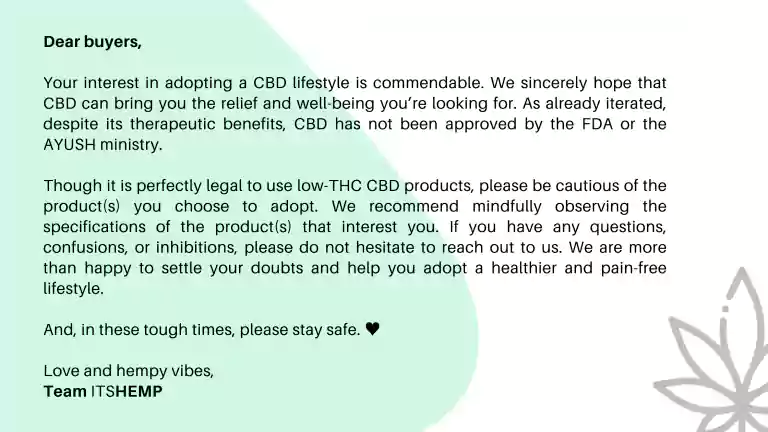
However, interestingly, studies indicate that the combination of alcohol and CBD leads to significantly lower blood alcohol levels. Other studies tell us that CBD can potentially protect against liver and nerve cell damage caused by alcohol.
We are still to understand the reason for these findings and no firm conclusion upon the relationship of CBD and alcohol has been established.
Side Effects of CBD
Here is a list of common side-effects that you may witness due to CBD’s interaction with some common medications.
- Drowsiness
- Sedation
- Nausea
- Fatigue
- Diarrhoea
- Changes in weight and appetite
What is CBD? | Chapter 10: How to buy CBD in India?
Because of varying and unclear guidelines, buying CBD in India can get confusing. It can be a hassle to identify authentic products and sellers from unreliable ones. This chapter helps you navigate your way through the process of buying CBD products.
Buy CBD Online in India
The safest way to buy CBD in India is online through reliable platforms. At the moment, the country does not have the provision to sell CBD products in retail and/or medical stores.
Online platforms are the only way you can buy CBD in India right now. So, look for seller platforms that not only list a variety of CBD products but are also transparent and open about what they’re doing.
Research
It goes without saying that before deciding to buy CBD, you should learn all you can about it. But research also extends to checking the background of the manufacturers and the sellers.
Stalk the online platform as much as you can. Look at their customer relationships, their communication, and their service. Because online platforms provide no means of face to face interactions, a lot of the judgement has to come from vetting.
Browse through their list of products, note the name of the companies listed, and then individually background-check those. This will help you in knowing the kind of manufacturers the platform is working with and hence the kind of products they are bringing to you.
Communicate
If someone is selling CBD to you, they should be able to answer all your possible queries about the product. Do not shy away from asking questions. Communicate with the seller platform via email, social media, or whatever form of contact is available. Note the way they respond and continue the conversation.
Are they able to answer your questions clearly? Can they help you navigate your way through confusion between two products? Can they tell you why product A is better than product B or C? The kind of communication the seller platform puts up will tell you a lot if you can trust them or their products. So, talk away!
Verify
After communicating with the seller platform, go back and verify everything they said. Ideally, the platform should be able to offer all the relevant information on their website.
This includes lab-test reports, rating, reviews, list of ingredients, potential benefits and side-effects, directions of use, shelf life, things to avoid, best recommended use, dosage, frequency, source plant, and extraction method and type.
If the seller platform rates the listed companies (which they totally should), be sure to check out their rating criteria. Does it make sense to you? Or are they just handing out stars in the dark?
Read what they tell you about a manufacturer and match that against what the manufacturer tells you about itself and what other platforms tell you about it. If everything adds up and you have zero unsettling feeling in your gut, you’re good to buy your CBD product.
Review
If you do buy a CBD product from an online seller, please take a moment to go back and leave an honest review. This helps everyone—the platform, the manufacturers, and the future customers.
The platform will know if there is something that they’re missing out on or need to be stricter with. The manufacturer will have a direction to further improve the product as well as expand their range and variety. And the next customers will know that they can trust the platform.
xIn the age of the Internet, authenticity matters a lot. Because everything is essentially happening behind a screen, everyone needs to be extra cautious. So, be thorough in your research and communicate your concerns, opinions, and reviews honestly.
Buy CBD in India on ITSHEMP
-
India Hemp Organics CannaBliss Arthritis Relief- CBD Oil (100ml)₹1,399.00
-
Zero CBD Blue Dream 15mg Broad Spectrum CBD Gummies (4 Pcs)₹400.00 – ₹7,000.00
-
Neet 300mg Broad Spectrum Vijaya Tailam CBD 30ml₹1,999.00
-
Cure By Design Organic Hemp Balm 2000 mg CBD (50 gms)₹2,500.00
-
Zero CBD Grand Daddy Purple 15mg Broad Spectrum CBD Gummies (4 Pcs)₹400.00 – ₹7,000.00
What is CBD? | Chapter 11: What to ask yourself before buying CBD online in India?
It’s great that you’ve decided to buy a CBD product! And with the ease of buying it online, some hassle is already out of the way. But that doesn’t mean you should buy the first product you can get your hands on.
No two CBD products are created equal. And it is important to do your research before settling on one. In this chapter, we collate the 20 most important questions you should ask yourself before buying a CBD product of any kind, especially online.
Why am I using CBD?
Do you want to buy CBD to deal with a particular medical condition or discomfort or are you just curious? Laying down your reasons for using CBD helps you choose the most suitable type and kind of product.
For instance, if you’re looking for a CBD product that can help you deal with stress or anxiety, tinctures may be your best shot. They are pure, concentrated, and quick to act. On the other hand, if you’re looking for CBD to provide you pain relief, while tinctures will work just fine, you might also want to explore the option of topical products such as balms and creams.
Whereas if you belong to the crowd that is just curious to see the kinds of effects CBD will have on your overall life, you might want to opt for oil drops, capsules, or edibles. These are easy to use, safe to consume, and convenient to monitor.
Knowing your reasons for considering CBD products helps you research better and make an informed decision. On the basis of that, you can determine whether to use a full-spectrum extract or an isolate; what dosage to begin with; how much dosage to rise to; what form of CBD to buy etc.
Where is my CBD coming from?
Who is making your CBD? Who is growing the plant that is giving out your CBD? Is it happening within a legal framework? Are the quality and quantity standards for cannabinoid percentage and ratio being met? What method is being used to extract my CBD? Are they adding something else to my product?
These are some very basic questions you need to ask yourself before you decide on a CBD product. If there is a variation in the cannabinoid percentage or quality of the strains, it can largely moderate the effects of the product. And it might cause legal implications as well.
Ideally, the label of the product should give you just enough information that answers all these questions. It should mention the type of extract, the strength, the list of ingredients, directions for use, source plant, etc. If not, you should easily be able to talk to the sellers about the product and get answers to all your questions.
Can I trust the people who are bringing it to me?
The answer to this question spans across two dimensions—manufacturers and sellers.
In the case of manufacturers, it is crucial to do your homework and research the brand that is manufacturing your CBD. Where are they sourcing their CBD from? What cultivation and extraction practices are they using? Are they open and transparent about their products? How willing are they to answer your questions? What is their background like?
The answers to these questions tell you if you’re buying an authentic CBD product or not. Because guidelines, and education, around CBD products is fuzzy and unclear, it is not uncommon to find products out there that are either mislabelled or fake.
When it comes to sellers, it is pretty easy to buy CBD from retail and medical stores. You can converse with people here and make your decision on the basis of that. But in the case of buying CBD online, you need to be a little cautious.
Does the platform look reliable to you? Do they know what they’re talking about? What is their product variety like? How much are they willing to assist you with your queries? What is their customer service like? Is there something fishy in their conversation? Are they providing enough information about the products?
Answering these questions for online sellers help you decide whether or not you can really trust the platform. Communicating with them and clearing your doubts will help you determine if the products they have are authentic and trustworthy.
Can they help me choose a product?
Are the sellers willing to assist you with choosing a CBD product? Are they patient enough to listen to all your concerns? Do they seem to be confident in the recommendation they’re making? Can they tell you why one product is better than the other?
When it comes to products like CBD, where information is still scattered and everything is new, partner only with people you can trust. If a seller is willing to sell CBD to you, they should be able to help you choose a product.
What type of CBD am I buying?
CBD is a wellness product and therefore carefully checking the label is important. The type of CBD you use will determine a number of things such as:
- Frequency of use
- Dosage
- Interference with other medication
- Possible side-effects
Before you go on to buy a CBD product, you must familiarize yourself with the difference between the types of CBD. Any CBD extract, in any product form, will be one of the three types:
- Full-spectrum: a whole-plant extract that contains, in addition to CBD, other cannabinoids, terpenes, flavonoids, and chemical compounds present in the cannabis plant. That means, this type of CBD will contain some amount of THC as well. While it offers enhanced benefits of all cannabinoids, it may cause some psychoactive effects as well.
- Broad-spectrum: an extract that contains, in addition to CBD, other cannabinoids, terpenes, flavonoids, and other chemical compounds present in the cannabis plant but specifically contains no THC. This type of extract also offers the enhanced benefits of all cannabinoids but with no psychoactive effects whatsoever.
- Isolate: an extract that contains only and only CBD. This extract is often the purest, most concentrated form of CBD and contains no other cannabinoids or chemical compound originally present in the source plant.
While buying CBD, you should check the label to understand what kind of CBD you’re buying. If you’re buying a whole-plant extract, you’ll have to look for the effects (and possible side-effects) of other cannabinoids as well.
The type of CBD will also determine your dosage. For instance, if you’re targeting the effects of CBD through a full-spectrum extract, you may have to ingest higher doses than an isolate. This in turn will determine the frequency of use.
Does this product contain CBD oil, hemp oil, or hemp seed oil?
Another important distinction is between CBD oil, hemp oil, and hemp seed oil. While in the industry, these terms are used interchangeably, they in-fact have different meanings and extraction process.
CBD oil is an oil extract that comes particularly from the flowers, leaves, and buds of the hemp plant. This oil is made to contain high amounts of CBD and its intended use is to grab the benefits of CBD.
Hemp oil refers to the oil extracted from the entire hemp plant. In a sense then, hemp oil is a whole-plant extract. While this oil will also contain CBD, the percentage will be less as compared to CBD oil. The intended use of this oil is for a more general sense of well-being.
Hemp seed oil comes from the seeds of the hemp plant. The other parts of the plant are not used in the extraction process. Hemp seed oil might contain some amount of CBD but it will be considerably less. The intended use of this oil is as a cooking and skincare supplement because of its high nutritional value.
Learning this difference helps you in knowing what product you’re using and how to use it.
How much CBD does this product contain?
Once you know the type of CBD you want, you’ll need to look for the amount of CBD present in the product. This is the part where things might get a little tricky depending on the type of product you’re buying.
Tinctures
- Tinctures: Tinctures usually come in a glass bottle with a built-in dropper. You need to look for the label that mentions the quantity and strength of the product. For instance, a 30mL bottle of 3000mg. Here, 30mL is the quantity of the whole bottle and 3000mg is the strength. That means, there is 3000mg of CBD in 30mL of this tincture.
- Edibles: Edibles come in pre-packaging packets. Here you’ll need to look for the quantity and amount of CBD of the whole pack. For instance, a pack of 20 CBD gummies contains 200mg of CBD. Here, 20 is the number of gummies in the pack and 200mg is the collective CBD that they all contain.
- Topicals: Topical CBD products contain a number of other ingredients in addition to CBD oil. Here, you need to check the quantity and amount of CBD in the product. For instance, a 100g pack of face cream contains 20mg of CBD. Here 100g is the quantity of the cream and 20mg is the amount of CBD it contains.
How much CBD will each serving have?
The next thing to know is how much CBD you will be consuming in each serving. This helps you determine the frequency and the number of servings you need to take throughout the day.
- Tinctures: The built-in dropper in tinctures usually has a baseline serving of 1mL. So, if you have a 30mL bottle of 3000mg CBD with 1mL as the base serving size, each serving will contain 3000/30=100mg of CBD. If your dosage is 25mg CBD twice a day, you’ll have to fill 1/4th of the dropper (till the 0.25mL mark) once in the morning and once in the evening.
- Edibles: In edibles, measuring CBD dosage is fairly simple. If you have a pack of 20 gummies with 200mg of CBD, each gummy contains 200/20=10mg of CBD. If your dosage is 20mg CBD twice a day, you need to eat 4 gummies throughout the day.
- Topicals: The concept of CBD dosage does not really apply in the case of topicals. This is because the use of topical products is not quantity-consistent. However, if you would still like to, you can apply the same formula. If a 100g pack contains 20mg of CBD, then one serving will have 20/100=0.2mg of CBD.
What else is in the product?
CBD products contain other ingredients in addition to CBD as well. This is especially true in the case of oils, edibles, and topicals. More often than not, tinctures are concentrated forms of CBD and they don’t contain any extra ingredients.
However, you may want to check if the tincture is full-spectrum, broad-spectrum, or an isolate. In isolates, there will only be CBD and CBD unless the label specifies otherwise. But in the case of full- and broad-spectrum extracts, the tincture will have other cannabinoids and terpenes from the cannabis plant.
You may want to check the list of cannabinoids and terpenes that the extracts contain to know if there are any allergies or potential interference you need to look out for.
- Edibles: in the case of edibles, CBD oil is the prime ingredient. But other ingredients include flavours, colours, added sugars, and preservatives. Here again, scan through the list of ingredients to check for any potential allergens.
- Oils & Tinctures: in these cases, you may want to look for the carrier oil that’s present, if any. While CBD oil is generally safe and does not cause any allergies, carrier oils may cause reactions on the skin.
Does my product contain THC?
Knowing if the CBD product you’re about to buy contains THC or not is important for two reasons.
One, there may be legal implications in your area. While some parts of the world allow the medicinal use of THC, some areas oppose them very strictly and some have unclear guidelines. Knowing the legal aspect of using THC, and other cannabis extracts, in your area is important to avoid any unwanted complications.
Second, THC sensitivity and psychoactive effects. If you’re using a full-spectrum extract, you may be signing yourself up for a bit of the high of cannabis. While the quantity of THC is significantly low in full-spectrum extracts, it is still present. And it, in all possibilities, can induce psychoactive effects.
Also, you may be sensitive to THC which can cause side effects such as headache, nausea, and feelings of sedation which otherwise may not occur. In this case, you may want to opt for isolate or broad-spectrum extract.
Are the labels clear and accurate?
While looking for the other ingredients that are present in the product, you’d get an answer to this question. Product labels matter a lot. A good should tell you everything there is to know about the product.
In the case of CBD products, labels should identify the type of extract, strength, third-party lab tests (yes or no), other ingredients, possible drug interactions, and any other warnings.
In addition, there should ideally be an instructional manual that briefly tells you how to use the product. This is important because no two products are equal and the usage may differ according to the manufacturer.
Is it third-party tested?
While most products say that they are lab-tested, it adds an extra value when they have been tested by a 3rd party lab. This vouches for their authenticity and reliability.
If the product has been tested by a third-party lab, the reports should be readily available somewhere on the platform. If not, whosoever is interacting with you should be able to provide concrete and conclusive arguments about its authenticity.
Do I care about the taste and smell?
A fairly recent opinion, the taste and odour of CBD products are a big thing now. Many people enjoy the benefits of CBD but are not great fans of its strong odour. These characteristics depend on the type of CBD you’re choosing.
Isolates are typically devoid of any taste and odour. But full- and broad-spectrum extracts can have a pungently strong taste and smell because of the presence of different cannabinoids and terpenes. In either case, there are flavoured options available that make consumption of tinctures a little easier. The most common flavours in CBD products are vanilla, lime, and peppermint.
How can I use this product?
Every CBD product can be used in at least 2 ways. It is important for you to know the ways in which you can modify the addition of CBD in your life. For instance, while sublingual consumption of tinctures is most effective, you can also add them to your foods and beverages. Similarly, while edibles are typically designed to be consumed directly, there is nothing stopping you from crushing and sprinkling them on top of your salads or desserts.
Know the different ways in which you can use the particular product you’re considering buying. This is important because some products may have ingredients that might stop them from being used in more than one way. Some ingredients might not support heat and therefore will be a disaster if added to your food.
Do I want fast effects or long-term effects?
This is an extension of your answer to the very first question. Once you know why you’re using CBD, you’ll know if you’re looking for fast, almost immediate relief, or more long-term effects. If you’re looking for relief that comes immediately, then sublingual consumption of tinctures is your way. They get absorbed quickly and directly enter the bloodstream providing an almost immediate effect.
However, if you’re using CBD to bring a more generalised sense of well-being, you may want to choose products that offer long-term benefits over a consistent period of time. These include edibles, especially tea and supplements, and topical products such as creams.
What kind of effects shall I look out for?
Whether you’re looking to deal with a particular condition or are just curious, there will be some property of CBD that attracts you the most. Be sure to do your research and note the kind of effects you should be experiencing.
For example, if you’re using a topical product for joint pain, the effect should be localised and only visible in the areas you apply the product to. However, if you take tinctures for the same, while they will provide relief to your pain, they will also offer other, wholesome benefits such as a sense of calm and relaxation.
It is essential that you know what kind of effects you can expect from each type of product. This will help you identify in case something is causing an allergy or a side-effect.
What side effects might it cause?
CBD is generally safe for use. But like every other drug, it may just cause some side effects in the body. Some of the most common side effects of CBD are dry mouth, headache, nausea, and diarrhoea. Overconsumption of CBD may also cause feelings of drowsiness and sedation.
Do I want to travel with my CBD?
The next question to ask yourself is if you’ll be travelling with your CBD. The factors to be accounted for here are legality and acceptance of the type of product.
CBD is a cannabis extract and guidelines revolving around cannabis extracts differ from place to place. Some regions may allow it given that it contains less than 0.3% of THC whereas some may prohibit it strictly. Others might themselves be unclear on their stand and may hold you in contempt.
Next, you’ll want to know what type of CBD product, if legal, is acceptable. For instance, if you’re travelling by air, the destination place may allow the use and carriage of CBD but only in solid form. That means that you can make edibles with you but may not be able to make tinctures.
It may also be the case that the airlines might not allow you to carry a liquid. In that case, tinctures and oils both are out of the way.
How will CBD interfere with my other medication?
CBD has numerous therapeutic benefits for the human body but research surrounding this substance is still young. Scientists and researchers are not quite sure about the interaction CBD may have with other commonly used drugs.
In the human body, the CYP450 enzymes metabolise CBD. These enzymes are also responsible for metabolising other drugs such as antidepressants and antibiotics. While we don’t know for sure, it is possible that these may interact and interfere with each other’s work.
Be sure to do your research before you buy a CBD product. The best-recommended way is to consult your healthcare professional and talk to him/her openly about CBD.
Can I overconsume CBD?
While it is not possible to overdose on CBD, overconsumption is possible. That is to say, CBD is not known to cause a fatal overdose. But taking too much CBD can induce feelings of drowsiness and sedation in your body.
And because the research on CBD still needs a lot of work, it is imperative to identify an ideal dosage for yourself and stick to that for a definite time period. Yes, CBD can work magic on our body but let’s not get carried away, shall we?
What is CBD? | Chapter 12: Legal Status of CBD in India
The legal framework surrounding cannabis, hemp, CBD, THC, and other cannabis extracts in India is fuzzy. There is no clear statement claiming that it is illegal to produce, sell, buy, or use CBD. But there is also no clear statement claiming that it is legal.
NDPS Act, 1985
Most of the guidelines about everything cannabis can be found in the NDPS Act of 1985. According to the act, any extract of the cannabis plant is prohibited for use. At the same time, it recognises plant extracts as a medicine in the Ayurveda and allows its use.
The NDPS Act also, in a nutshell, prohibits the production and sale of cannabis resin and flowers but allows the use of the leaves and seeds.
From what we know, the permission to cultivate industrial hemp (which is typically the source of CBD) is in the hands of the state government. At the moment of writing this piece, it is legal to cultivate and process hemp in the states of Uttrakhand and Uttar Pradesh.
FDA and AYUSH Ministry
From what we know, the FDA and AYUSH Ministry do not approve of CBD products. While the FDA did pass Epidiolex, a CBD-based drug for treating seizures, it does not provide the seal of approval on any other CBD product.
However, using a whole-plant cannabis extract is considered to be an Ayurvedic medicine. From our understanding, this combined with the permitted use of seeds of the hemp plant, means that it is safe to use the extract that comes from the leaves or the seeds.
Importing CBD in India
According to the ITC (HS) import policy of 2017, the import of THC, including all its isomers is permitted if the importer has a no-objection certificate from the narcotic commissioner.
Interestingly, CBD has the same chemical structure as THC and is considered to be its isomer. Therefore, according to this provision, the import of CBD should be permissible. The no-objection certificate may be permitted by the narcotics commissioner if he/she is satisfied that the product is sought generally for scientific or medicinal purposes.
All in all, while the production, sale, use, and import of all narcotics and psychotropic substances are prohibited, it may be allowed under special provisions in the NDPS Act. If needed for medical or scientific purposes, the use and import of cannabis extracts such as THC, CBD (as an isomer of THC), charas, ganja, and any mixture from cannabis (as defined in the NDPS Act) are allowed with due permissions.
Defining Narcotic Drugs and Psychotropic Substances
It makes sense to take a look at how the NDPS Act defines these terms to help us better understand the legality.
In the legal sense, a narcotic drug can be anything from opiate to cannabis or cocaine. The term psychotropic substance refers to any mind-altering drug.
It is interesting to note that while CBD comes from species of the cannabis plant, it is a non-psychotropic substance and should, therefore, be good to use. Here is a list of terms as defined in the NDPS Act, 1985:
- ‘Cannabis (hemp)’ is also known by the following terms:
- Charas, that is, the separated resin, in whatever form, whether crude or purified, obtained from the cannabis plant and also includes concentrated preparation and resin known as hashish oil or liquid hashish.
- Ganja, that is, the flowering or fruiting tops of the cannabis plant (excluding the seeds and leaves when not accompanied by the tops), by whatever name they may be known or designated.
- Any mixture, with or without any neutral material, of any of the above forms of cannabis or any drink, prepared therefrom.
- ‘Cannabis plant’ means any plant of the genus Cannabis.
- ‘Coca derivative’ means:
- Crude cocaine, that is, any extract of coca leaf which can be used, directly or indirectly, for the manufacture of cocaine.
- Ecgonine and all the derivatives of ecgonine from which it can be recovered
- Cocaine, that is, the methyl ester of benzoyl-ecgonine and its salts.
- All preparations containing more than 0.1 per cent of cocaine.
- ‘Coca leaf’ means:
- The leaf of the coca plant except for a leaf from which all ecgonine, cocaine and any other ecgonine alkaloids have been removed.
- Any mixture thereof with or without any neutral material, but does not include any preparation containing not more than 0.1 per cent of cocaine.
- ‘Coca plant’ means the plant of any species of the genus Erythroxylon.
- ‘Narcotic drug’ means coca leaf, cannabis (hemp), opium, poppy straw and includes all manufactured drugs.
- ‘Opium’ means:
- The coagulated juice of the opium poppy.
- Any mixture, with or without any neutral material, of the coagulated juice of the opium poppy, but does not include any preparation containing not more than 0.2 per cent of morphine.
- ‘Opium derivative’ means:
- Medicinal opium, that is, opium which has undergone the processes necessary to adapt for medicinal use in accordance with the requirements of the Indian Pharmacopoeia or any other Pharmacopoeia notified in this behalf by the central government, whether in powdered form or granulated or otherwise or mixed with neutral materials.
- Prepared opium, that is, any product of opium obtained by any series of operations designed to transform opium into an extract suitable for smoking and the dross or other residue remaining after opium is smoked. NICFS CHAPTER 8 A Forensic Guide for Crime Investigators 169
- Phenanthrene alkaloids, namely, morphine, codeine, thebaine and their salts.
- Diacetylmorphine, that is the alkaloid also known as diamorphine or heroin and its salts.
- All preparations containing more than 0.2 per cent morphine or containing any diacetylmorphine.
- ‘Opium poppy’ means:
- The plant of the species Papaver somniferum L.
- The plant of any other species of Papaver from which opium or any phenanthrene alkaloid can be extracted and which the Central Government may, by notification in the official gazette, declare to be opium poppy for the purposes of this Act.
- ‘Poppy straw’ means all parts (except the seeds) of the opium poppy after harvesting whether in their original form or cut, crushed or powdered and whether or not juice has been extracted therefrom.
What is CBD? | Chapter 13: Tips for CBD Beginners
So you’re looking forward to buying one of your initial CBD products. But there is still some confusion inside of you. Maybe you’re not sure about the type of extract you should get or if you should choose a tincture or a capsule. This chapter gives you 5 basic tips to begin your CBD journey like a pro.
Start with Edibles
- Start with Edibles: Edibles are products infused with CBD that are ready for consumption. These include gummies, chocolates, protein bars, tea, coffee, and some cold beverages. CBD edibles are the safest way to begin your edible journey. These have a pre-set amount of CBD and do not include the hassle of measuring each dosage. Moreover, these come with additional flavours so you’re not intimidated by the strong taste and odour of a pure CBD extract.
Edibles also make a great addition to any of your food items and they provide long-lasting relief. Edibles promote a wholesome sense of well-being while targeting multiple conditions at once. Moreover, edibles do not directly enter the bloodstream so it takes a little while for their effects to show. This is a good thing for beginners because it keeps you from being overwhelmed. - Start before Bedtime: CBD is a relaxant. It promotes a sense of calm in the body. We recommend that you start your CBD journey in the evening before hitting the bed. Consume one or two pieces of an edible or have a cup of CBD beverage before going to sleep.
Not only will this promote peaceful and more relaxed sleep, it will also help your body get used to the changes in an easy way. When your day is ending, you’ll be free of extra stress such as from work or school. And your body can focus on this new substance with caution. - Start with a Low Dosage: While it’s tempting to just gulp down the strongest CBD for your pain, it is not recommended. In fact, beginning with a low dosage makes sense for a number of reasons. First, in low dosages, your body will not be overwhelmed and can easily find a way to accommodate this new drug. In case there were to be any side effects or interference with other medication, a low dosage would be nearly ineffective and alarm you before anything major happens.
Secondly, if you were to give in to your temptations of re-dosing, lighter dosages will not be as harmful. Re-dosing is one of the most common reasons why people end up taking too much of anything. Depending on the way you’re consuming CBD, the onset time will differ and so will the effects. It is natural to feel that you’re not experiencing any effects and therefore you should re-dose. It is also entirely possible to have a placebo effect and feel benefits that may not be there. This can also promote the sense of re-dosing.
But it is very important that you stick to the minimum dosage of not more than twice a day when you’re just beginning your CBD journey. - Pick an Isolate First: Even though full-spectrum extracts can be more effective than isolates, beginners should choose the latter. Full-spectrum extracts contain all the cannabinoids, terpenes, and other chemical compounds naturally present in the cannabis plant. This includes the psychoactive cannabinoid THC as well.
If you’re a beginner, you might want to stay away from THC. It is important to give your body time to adjust to the functioning of CBD and CBD alone in the beginning. THC can induce a feeling of euphoria which you might not be prepared to deal with.
This holds true for broad-spectrum CBD as well. Even though it has no THC, other cannabinoids together may throw the system off-balance and you might experience adverse side effects. - Stick with One Product: CBD is a wonder and it is possible to be tempted to try all different kinds of products. But the wise thing is to stick with one and one type of product at least for the first 3-6 months. This gives your body enough time to accommodate the new drug, helps you track benefits and side effects, and allows you to carefully administer your dosage.
If you’re beginning with edibles, stick to edibles for at least 6 months. Once you notice satisfactory effects, you can switch to oil and then to tinctures. Unless you’re targeting a very serious medical condition, you should not begin with tinctures.
Buy CBD in India
-
India Hemp Organics CannaBliss Arthritis Relief- CBD Oil (100ml)₹1,399.00
-
Zero CBD Blue Dream 15mg Broad Spectrum CBD Gummies (4 Pcs)₹400.00 – ₹7,000.00
-
Neet 300mg Broad Spectrum Vijaya Tailam CBD 30ml₹1,999.00
-
Cure By Design Organic Hemp Balm 2000 mg CBD (50 gms)₹2,500.00
-
Zero CBD Grand Daddy Purple 15mg Broad Spectrum CBD Gummies (4 Pcs)₹400.00 – ₹7,000.00
-
Cure By Design Hemp Oil for Pets – 500mg CBD (30ml)From: ₹2,000.00
-
India Hemp Organics CannaBliss Arthritis Relief- CBD Oil (50ml)₹999.00
-
Product on saleBroad Spectrum CBD Drops₹1,999.00 – ₹9,999.00
-
Cannabryl Full Spectrum Vijaya Extract For Dogs, 1500mg, CBD-THC Balanced, 30ml₹4,500.00
-
Product on saleAndyou – Vibe&U Mood Uplift Gummies (200mg CBD + terpenes for good vibes), Orange Flavour, 10 GummiesOriginal price was: ₹1,499.00.₹1,320.00Current price is: ₹1,320.00.


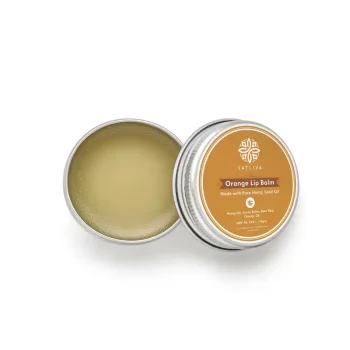
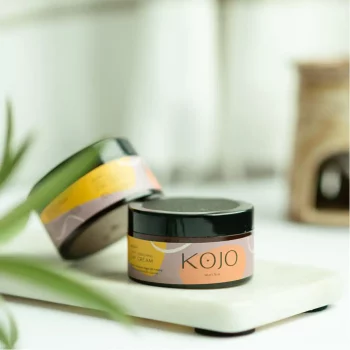
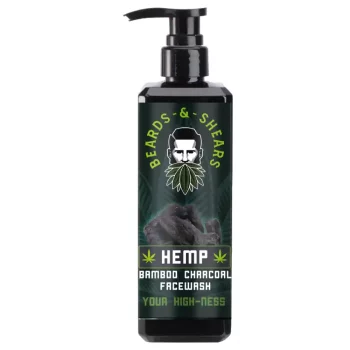
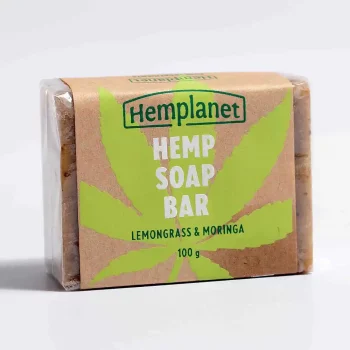
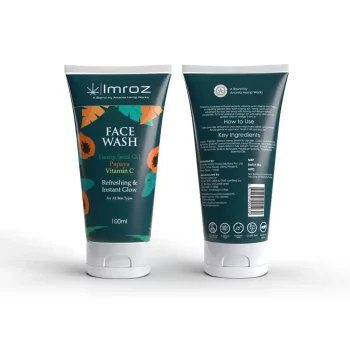

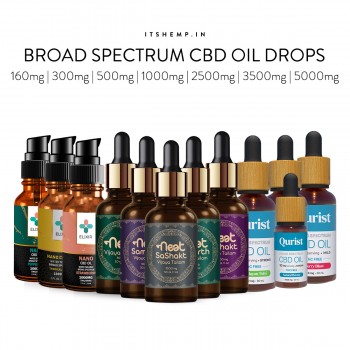
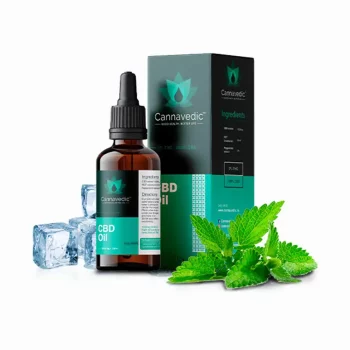
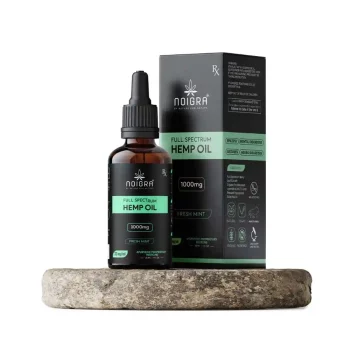
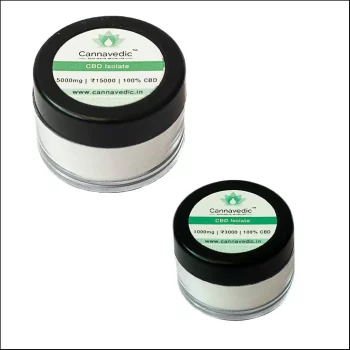
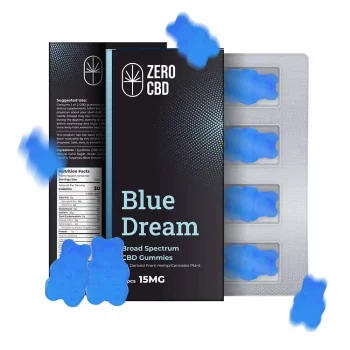
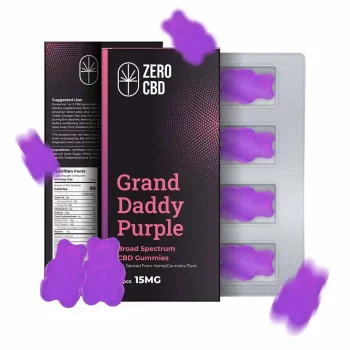
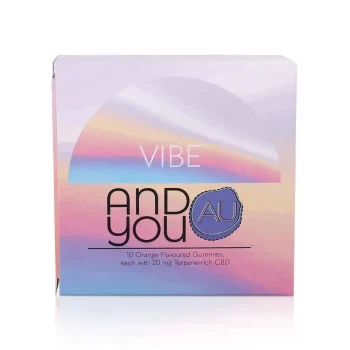
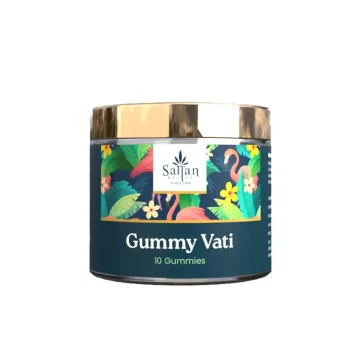
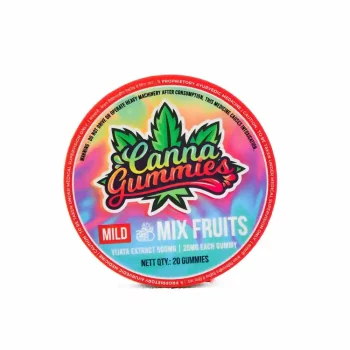
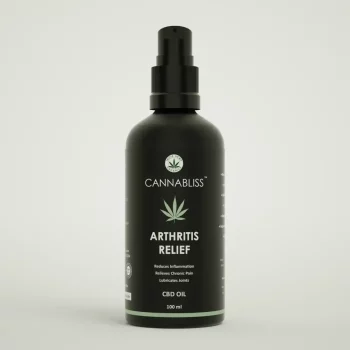
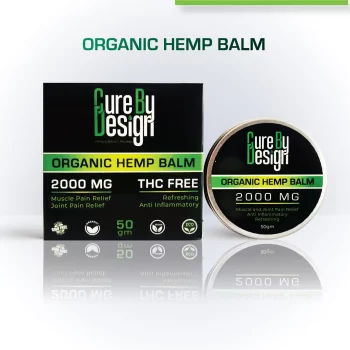
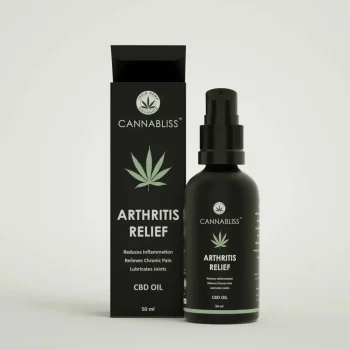
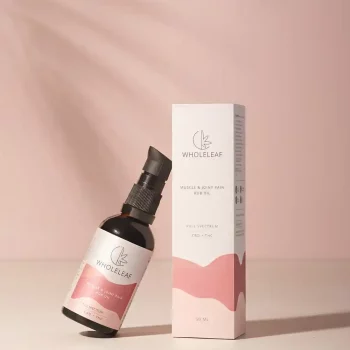
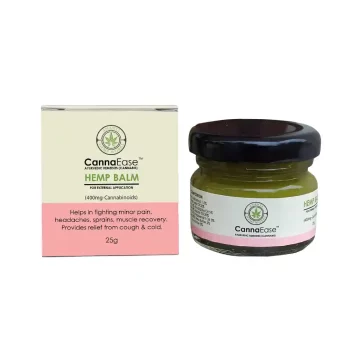
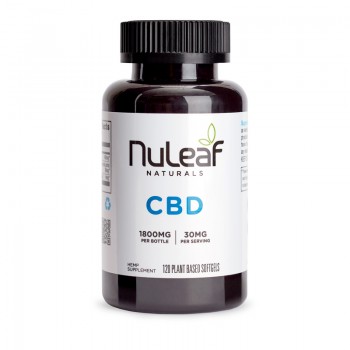
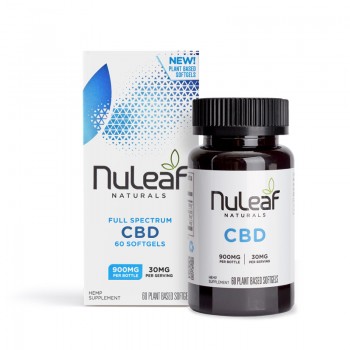
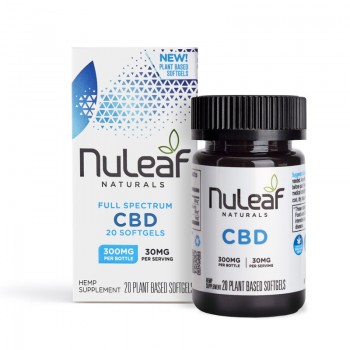
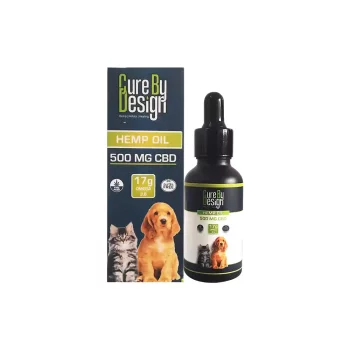



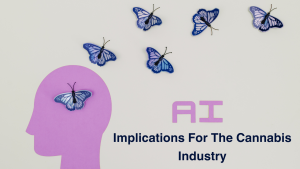





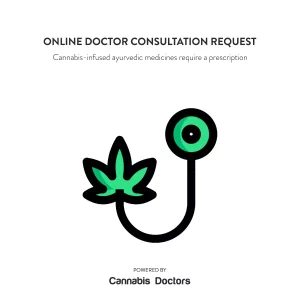

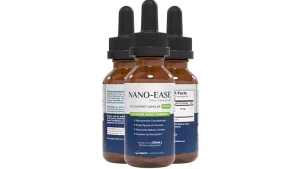
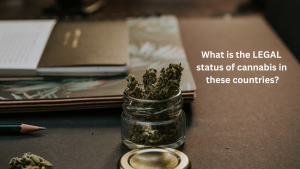



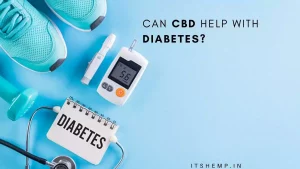

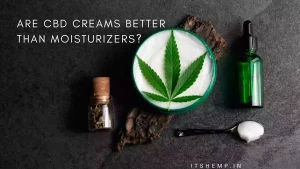
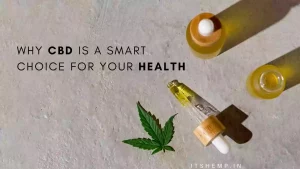
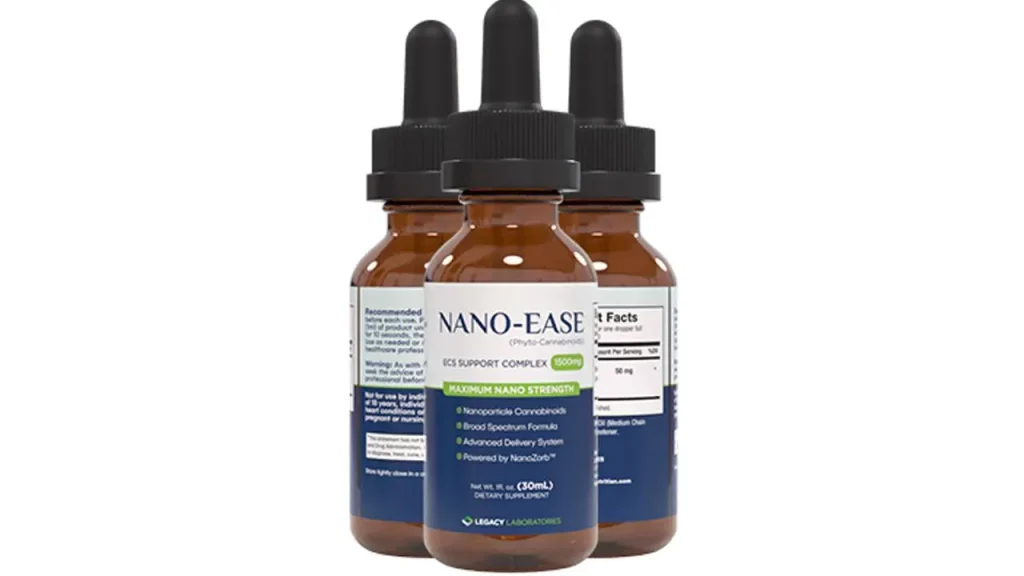
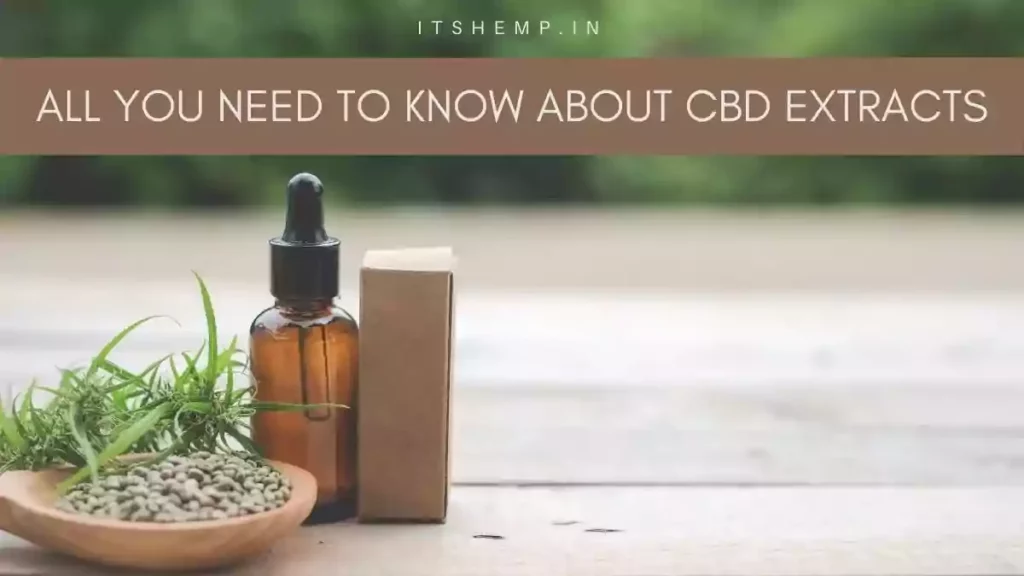
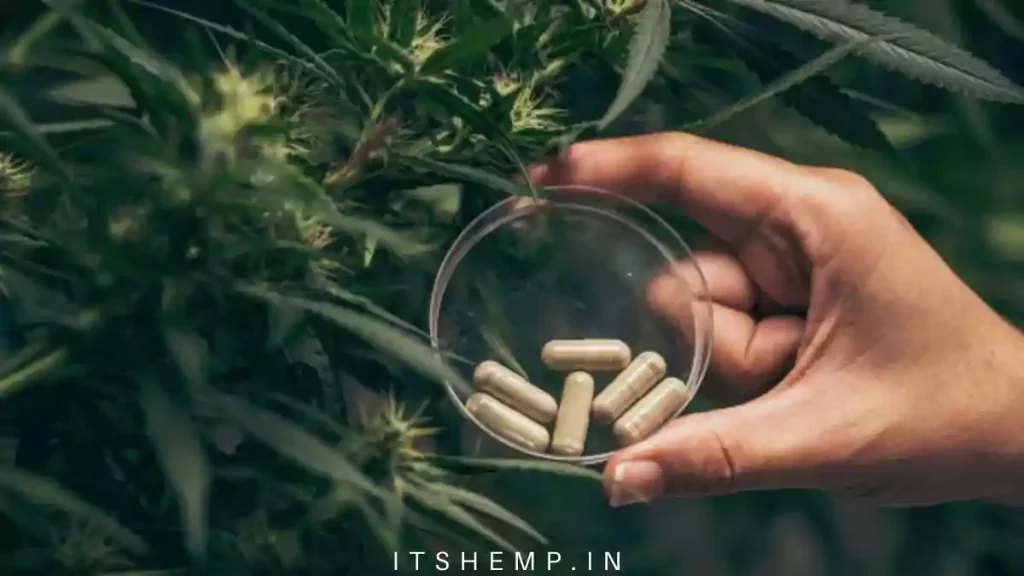


This is the wholesome content I wanted to find on google. Thank you guys so much. I didn’t expect all of these to be in the same place.
Hi Prranauv!
I am glad that you found value in our work.
A truly respectable article about CBD! You can find answers to almost all questions about cannabis.